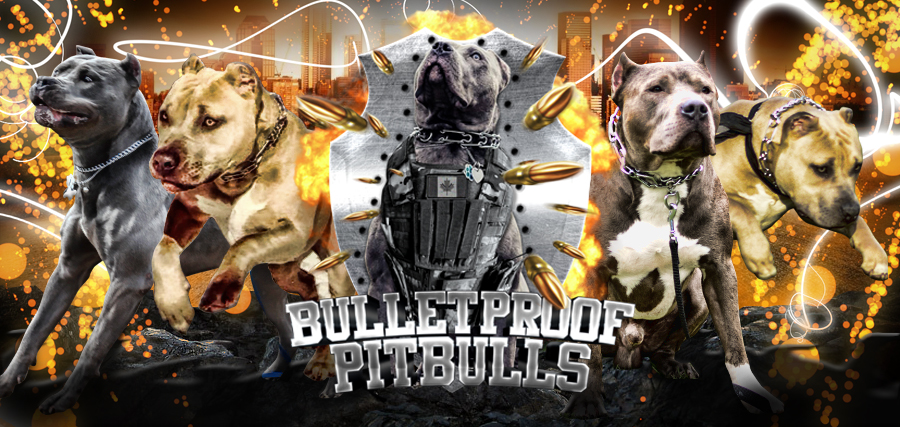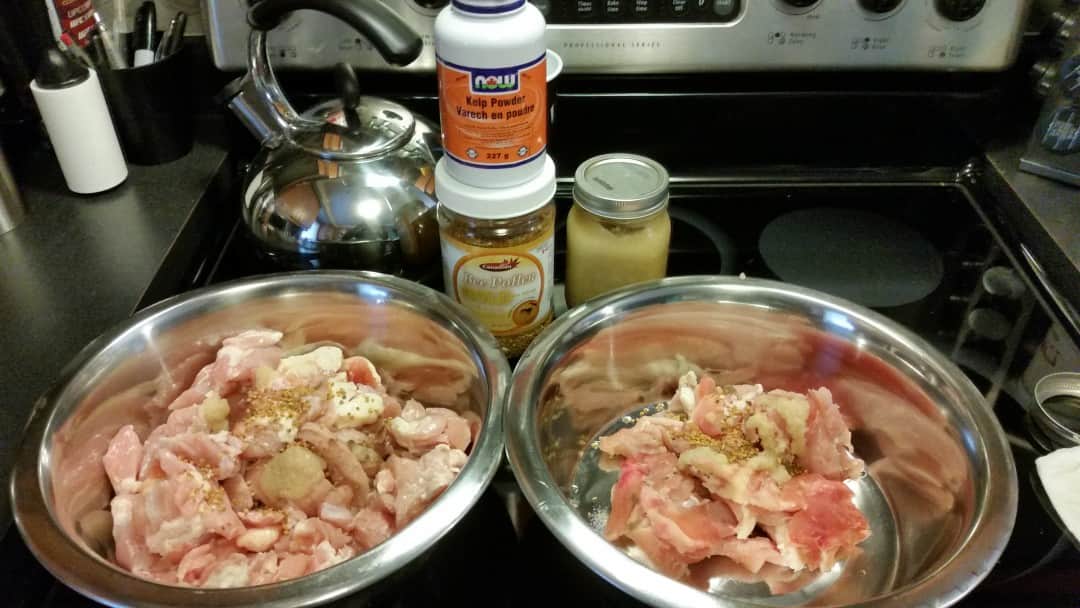
We understand that not everyone has the time and the patience to feed a raw diet. We do feed kibble because of convenience and to test the dogs stomach for allergies or stomach issues. That being said, I prefer the result of raw fed dogs over kibble and doing raw right isn’t so hard once you get the hang of things. Dogs learn to chew when eating a raw diet so the chances of swallowing objects has been zero for me. Dogs that eat kibble learn to swallow with no chewing and inhale anything they get their mouths on. Learning how to chew is one benefit of a raw diet. I always teach puppies how to chew by feeding whole chickens as pups. Our dogs also eat in a bowl and do not take food out of the bowl and drag it all over town. This can be trained easy but is discouraging in the beginning.
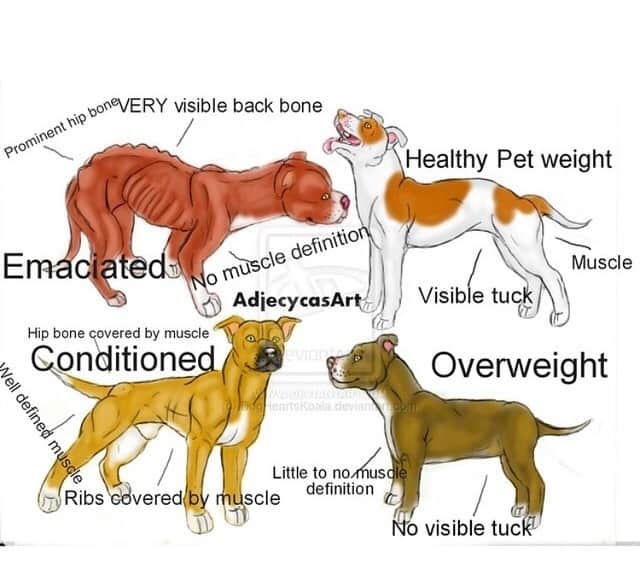
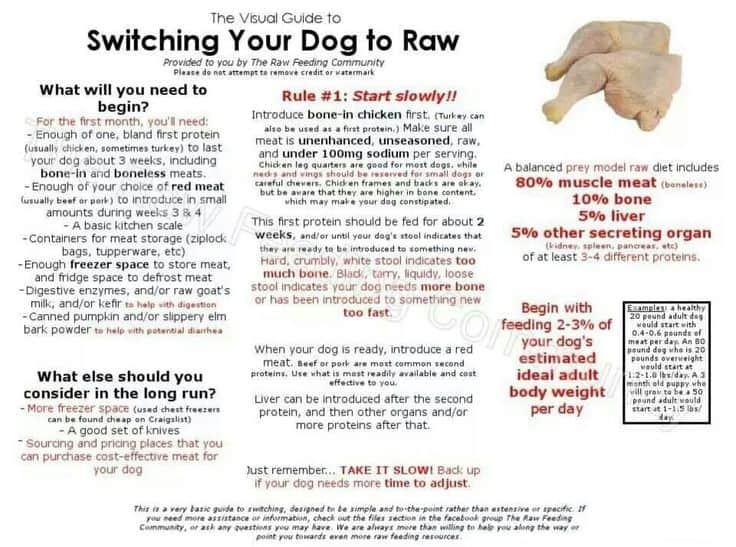
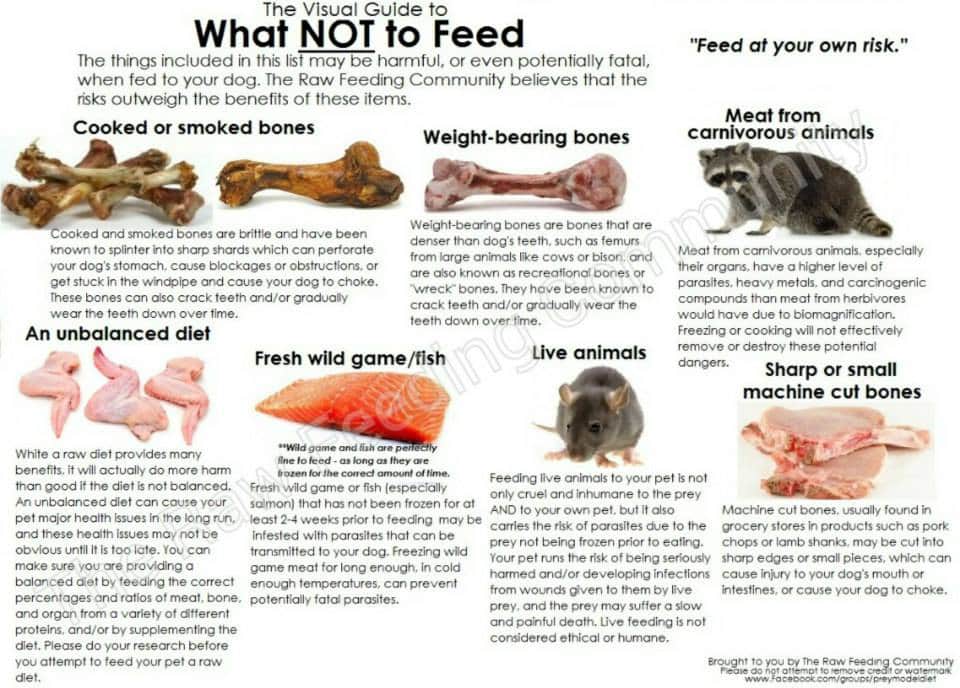

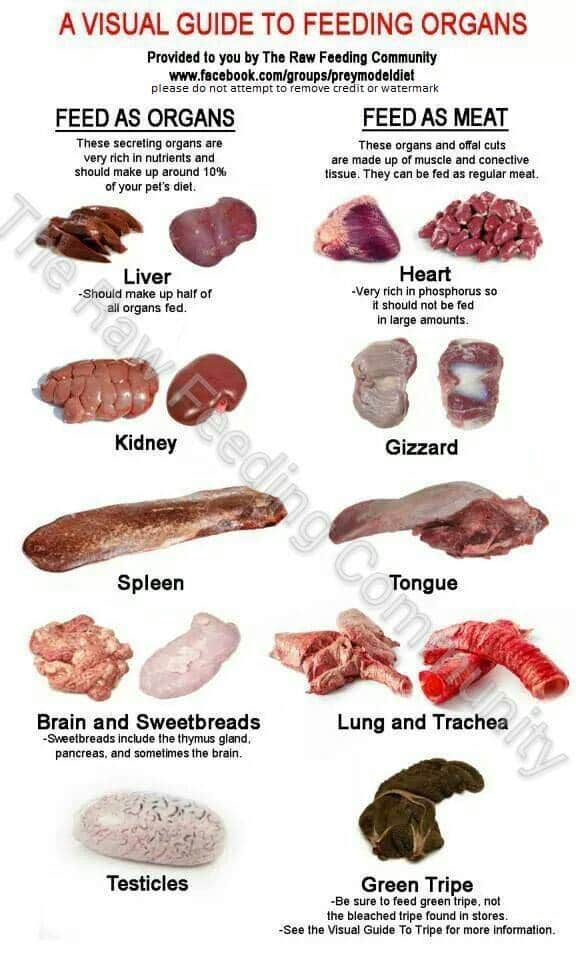
What is a Raw Diet?
You’ve probably seen it mentioned in your dog-related forums and Facebook groups, or it’s been recommended to you by a groomer, a trainer, or a friend. Everything you hear about it seems to be one of two extremes – either it’s being touted as some kind of miracle cure for everything from allergies, to cancer, to heartworms – or, someone is claiming that it will immediately turn your dog into a blood thirsty monster… if it doesn’t kill him first, of course.
So, what’s the big deal with this “raw diet”? Well, I can tell you right now: it isn’t a miracle cure for everything. I can also tell you that it will not turn your beloved Fido into Cujo or one of the zombie Dobermans from Resident Evil. But from personal experience, I can promise you that switching my dogs to a raw diet was one of the best, if not THE best decision, I’ve ever made for their health.
A raw diet is a diet composed mainly of uncooked meat. There are many different kinds of raw diets, all of which have their fair share of avid supporters. The most fun part of researching raw diets is that nobody seems to agree on any one specific way of feeding raw. Some include fruits and veggies, while some do not. Some are composed of ground up meat and supplements, while some strive to feed whole animals, organs, fur, feet, and heads intact. There are the raw feeders that shout “grass-fed organic” from the rooftops, and then, there are those that pick up roadkill and free meat from potentially sketchy strangers on Craigslist.
There are two major groups that raw diets can be separated into: commercial raw diets (such as Bravo, Stella and Chewy’s, or Vital Essentials), and homemade raw diets, made and balanced by the pet owners themselves. Homemade raw diets come in many forms, but there are two models of feeding that seem to be the most popular: BARF (which stands for “bones and raw food” or “biologically appropriate raw food” and also makes you wonder who in the world thought that acronym was the best marketing choice), and “prey model”.
Commercial raw diets are commonly regarded as the safest raw option by most veterinary professionals, mostly due to the fact that they are already balanced and require no thought process from the owner beyond “buy, thaw, serve” – which to them is a huge plus, considering their last emergency client’s dog was lethargic and half-dead because all they were feeding him was ground beef and white rice for the first 10 months of his life. On the flip side, commercial diets are also incredibly expensive, and sometimes might be hard to come by, depending on where you live. With the proper research, homemade diets can be perfectly balanced and just as safe if not safer than commercial diets.
RAW DIETS
I feed a variation of the “prey model” diet. Although I follow many of the prey model guidelines, I still add some supplements and occasional fruits/veggies.
All of these options contain mostly raw meat, bone, and organ, and they may or may not contain fruits, veggies, grains, starches, supplements, or added processing (from grinding to HPP to freeze-drying). Most commercial raw diets include all or some of those things, although recently some commercial diets have been advertised to contain nothing but meat/bone/organ. Most homemade raw diets are balanced over time by specific percentages of (you guessed it) meat, bone, and organ – plus anything else that may be added to that specific diet. One of the most common ratios, promoted by the “prey model” followers, would be 80% muscle meat/10% bone/5% liver/5% other secreting organs, while BARF feeders follow a model of 60% raw meaty bones/40% veggies. Prey model feeding strives to recreate something similar to what wild canines would be eating in the wild; the ratio of meat/bone/organ, as well as the fact that fruits/veggies are typically excluded from the diet, is based on the belief that domesticated dogs are carnivores. BARF feeding on the other hand, is based on the belief that domesticated dogs are instead omnivores, and require veggies as an essential part of the diet. But these are just general guidelines, and many raw feeders seem to be feeding a combination of these diets rather than strictly one or the other. For instance, there are still “prey model” feeders that include veggies, dairy, or supplements in the diet. Many BARF feeders seem to be using the 80/10/5/5 ratio now too, rather than the very simple 60/40 ratio that was first recommended by the “founder” of the BARF diet, Ian Billinghurst. In other words, prey model and BARF seem to be meshing together, and some aspects of a homemade raw diet (such as supplements or veggies) are regarded as personal choice rather than mandatory.
I know what you’re thinking. This whole raw diet thing seems complicated and time-consuming. You buy a bag of kibble, you put some in a bowl, and you let your dog eat it. Why complicate it any more than that? Well, the raw diet does come with a variety of benefits. Raw diets have been claimed to clean teeth and promote healthy gums (while avoiding costly dental procedures), create shiny coats and healthy skin, help alleviate allergies or infections, and even cause your dog to poop less often and in smaller amounts.
Still – it is not the “miracle cure” it is sometimes claimed to be. Raw fed dogs are not invincible like some Facebook experts may seem to imply. Dogs that are fed a raw diet are not automatically immune to infections, fleas, worms, bloat, cancer, or physical injuries (yes… I’ve seen all of those things claimed on raw feeding forums and groups.) And, no matter how many times you hear “it’s so easy!” and “it’s cheaper than kibble!” – that may not be your personal experience.
A raw diet can greatly benefit almost every dog – from puppies to seniors, Danes and Chihuahuas, working dogs and couch potatoes. But every dog is different – and arguably even moreso, so is every owner. Raw diets are not “one size fits all.” It takes research – in other words, time and effort – to find out what works best for you and your dog in particular. And an improper or unbalanced raw diet can cause far more issues than it could potentially help in the long run. This one’s too pricy, this one’s time-consuming, this one’s not balanced – but this one’s just right!
So you’re aware that raw diets won’t make your dog immortal, and you’re prepared to do some digging to find out how to start. Now… how DO you start?
The first thing you should do is find a support system. This could be an experienced friend, your veterinarian, a reputable raw feeding Facebook group, or any one person or group of people who can give you advice along the way. The worst thing you can do when feeding a raw diet is feeding an UNBALANCED raw diet, and in order to prevent that, you will probably need an avenue in which you can find advice and answers to your questions as you go along.
Next, you will need to consider what kind of raw diet would be best for you and your dog. Your budget, freezer space, and the amount of time you will be able to spend sourcing, weighing, and portioning your dog’s diet will be some of the major factors in this decision. Commercial raw would be best for those who are willing to pay for convenience. A homemade diet will be significantly cheaper, but may require more time and space than a commercial diet typically would.
It might be easier for you, your wallet, your free time, and/or your lack of currently available freezer space, to feed a partial raw diet rather than make the full switch to raw. Raw meaty bones, like turkey necks or chicken leg quarters, can be fed alongside frozen or freeze-dried commercial raw products in order to save money and also provide the benefits of teeth cleaning and mental stimulation that commercial raw normally does not typically offer. Although I have witnessed many people in Facebook groups and online forums warn against feeding raw and kibble together – claiming that the differing digestion rates will “trap” the raw behind the slowly-digesting kibble, causing bacteria in the raw meat to sit in the stomach for too long which will potentially harm your dog – I have never seen this claim backed up, but rather, have just seen it spread around by someone-that-heard-it-from-someone-else. Scientifically, this theory doesn’t make sense; the digestive system just doesn’t work that way. In fact, the canine digestive system is built to handle large amounts of bacteria. Not only that, but the longer something stays in the stomach, the more time it has to break down; adversely, something that passes too quickly through the digestive system may not get enough time for the nutrients to be utilized completely. Don’t let this myth deter you from feeding a diet of kibble and raw. Mixing raw and kibble is a common and effective way to feed, and has been successfully practiced for years by countless pet owners. Feeding a 50/50 raw diet along with kibble can still provide your dog with many of the health benefits of raw. Even replacing one meal a week with a turkey neck you picked up from Wal-Mart’s meat section, instead of a boring bowl of kibble, will give your dog a weekly teeth cleaning session. Look at it this way: some raw is better than no raw at all!
Pricing a raw diet depends on many factors. Obviously, things like your dog’s size, weight, activity level, and metabolism come into play, since that will determine how much your dog needs to eat. But things like where you live come into play too – are there any nearby co-ops or distributors? What about ethnic markets, where you can find much better variety and deals on meat than your typical Grocery store? Are there many local butchers, hunters, processors, or farmers in your area who could be contacted for cheap, or even free, scraps? Sometimes, being able to afford a raw diet means taking the extra time and effort to find the best deals, and also, having the freezer capacity to be able to buy meat in bulk.
Although raw feeding may seem overwhelming at first, you’ll soon find that the benefits of this diet are equally overwhelming. Why else would so many pet owners go to such extremes to feed raw? Fortunately for the new raw feeder, there are countless resources available to anyone who is interested, and you have many options to allow raw feeding to fit into your specific lifestyle… whether you live on acreage in the country, or in a small NYC apartment. Raw would be a great thing to consider in order to provide your dog with a healthier diet, and therefore, a longer, healthier life. Isn’t that what all dog owners want?
What’s the big deal with turmeric?
Lately, I have been seeing more and more articles on the health benefits of turmeric for dogs. So, I thought I should weigh in: what’s the big deal with turmeric?
Turmeric is a root native to Asia and parts of Africa that is most commonly used as a spice and an herbal medicine. You might recognize it as the main spice in curry. (Yum!)
There is a very long list of claimed benefits… according to many online sources, it can cure anything from arthritis, ringworm, depression, leprosy, Alzheimer’s disease, and of course, cancer. There is a Facebook group, created by an Australian veterinarian, with over 70,000 members dedicated to using turmeric for its health benefits, and it contains tons of success stories, as well as an extensive files section on all there is to know about turmeric’s potential health benefits. Many popular websites, such as Dogs Naturally, have also been claiming the tremendous benefits of turmeric in their articles.
Curcumin is the “active ingredient” of turmeric, and the source of these health benefits. Curcumin is claimed to have anti-inflammatory, antioxidative, and anticancerous effects, and it does look hopeful in the tests and studies that have been done thus far.
However, most of these studies have been in vitro tests, rather than clinical studies, which do not prove a clinical benefit for patients. As for clinical research, not much has been done yet, however the in vitro research absolutely can suggest a number of potential medical uses for turmeric.
But these studies have been conducted mostly on humans, and if there is a lack of research in humans, there is even more of a lack of research when it comes to the benefits it may offer dogs. This study, the only clinical study involving dogs rather than humans, compared turmeric to a placebo in dogs with arthritis and concluded that “there was no statistically significant difference” between the placebo group and the group that was given the turmeric compound, though there was a small difference according to the subjective assessment of investigators.
Turmeric seems to have few side effects, but they are definitely worth mentioning.
Gastrointestinal upset
Possible increase in the risk for some kinds of bladder and kidney stones
High levels of curcumin can cause liver and DNA damage in humans if taken in large doses over extended periods of time
Curcumin may alter iron metabolism, potentially causing iron deficiency.
Taking turmeric supplements while pregnant might promote a menstrual period or stimulate the uterus, putting the pregnancy at risk of a miscarriage.
Turmeric is a blood thinner, so using it alongside other herbs or medications that also thin the blood (such as ginger or garlic) may become problematic for some dogs and increase the risk of bleeding.
In animals, high doses of turmeric have caused liver problems.
Animals may develop a “cat pee”-like smell while being supplemented with turmeric.
These risks are small, however, according to the studies that have been done thus far in humans that suggest curcumin has quite a large safety threshold.
Curcumin has low bioavailability, so it is typically recommended to be enhanced with other agents such as black pepper extract in order to increase absorption and maximize benefits. Turmeric paste, or “golden paste”, is recommended by many for dogs and humans, rather than just turmeric powder, to increase bioavailability. Turmeric pastes typically contain turmeric powder, olive or coconut oil, and black pepper.
Speaking of bioavailability, considering that dogs are carnivores, it seems that turmeric paste wouldn’t be the most “species appropriate” supplement, and the conclusion could be drawn that if it isn’t very bioavailable for humans, it would be much less so for dogs.
In conclusion, there is not very much evidence to support the use of turmeric for any health condition, especially in dogs, simply because so few clinical trials have been conducted. But that doesn’t mean you should completely write it off. The results of the tests and studies that have been conducted so far imply that there are only a few potential risks or side effects, and there is sufficient research to imply that there may be clinical benefits. And when you consider the overwhelming number of positive reviews online from dog owners that have given turmeric a try, even if most of them might just be experiencing a placebo effect, the concept that turmeric could have therapeutic value is very plausible. If you are interested in adding turmeric to your dog’s diet, we recommend discussing this option with your vet.
A Simple Guide to Switching to Homemade Raw
So you want to feed a homemade raw diet to your dog, cat, or ferret, but you don’t know where to begin. You’ve probably realized by now that there are many ways to feed raw. It all comes down to determining your pet’s individual needs, as well as your own. Figuring all of this out may include some trial and error, which does require some time and patience while you learn and adapt to this new adventure of feeding a homemade raw diet.
How do I start?
This is typically the first question everyone asks. You will have to consider what all goes into a raw diet first, and decide if you are ready to make the switch yet.
First, I would recommend looking into what resources you have available in your area. Find raw feeding co-ops, butchers, ethnic markets, meat processors, local farms, or even restaurant supply stores that may have good prices and/or “odd” products, like hearts and livers. Homemade raw is typically only affordable if you look for the best prices.
Usually, the best prices are found by buying in bulk. In order to buy in bulk, you will probably need to invest in an extra freezer. Chest freezers seem to be the most cost effective, while upright freezers allow you to be more organized. You will also need containers to store meat in, such as plastic bags or Tupperware. (Reditainers can be found on Amazon and tend to get good reviews from raw feeders.) Another thing to consider is whether or not you have enough fridge space to put meat that you are thawing or storing until the next meal. Of course, the amount of freezer/fridge space you will need depends on how much you will be feeding per day, and that will depend on how many animals you are feeding and how big they are.
You will also need a basic kitchen scale in order to make sure you are feeding the correct amounts of everything by weighing the meat. You will learn to appreciate a good set of knives when breaking down things like whole chickens, you will most likely need a cutting board, and as an extra precaution, you might even consider getting gloves due to frequent handling of raw meat.
Although not at all required, many raw feeders eventually invest in equipment such as a dehydrator to make treats, or even a high quality meat grinder, especially for dogs that may not be able to handle whole raw meaty bones, or to make sure a finicky cat, that may try to pick around things they don’t want to eat, has a balanced diet. (Most grinders cannot handle bone, so make sure you do your research before buying and expect to spend some money in the beginning!)
How much should my dog/cat eat?
The general guideline is to feed 2 to 3% of your pet’s ideal adult body weight. That means if your pet is overweight, you should calculate the food based on their ideal weight, rather than current weight. Same goes for growing puppies or kittens; they should be fed based on their adult weight, split into 3 to 4 meals throughout the day. Remember that every animal is different, and some will need more or less than others depending on things such as energy level, amount of exercise, metabolism, and even genetics or breed.
How do I know the diet is balanced?
I cannot stress this enough: just feeding raw meat does not mean you are feeding a correct or balanced raw diet. A raw diet requires as much variety as possible (i.e. you can’t feed just chicken), with a minimum of 3 different protein sources, and the correct percentages of meat, bone, and organ. An unbalanced diet can be extremely detrimental, and even fatal, in the long run.
To make sure you are feeding a balanced diet, you should follow the 80-10-5-5 guideline. This is:
80% muscle meat, 10% bone, 5% liver, and 5% other secreting organ.
These percentages are based off of the “prey model” raw diet. However, just feeding these percentages alone doesn’t automatically mean the diet is balanced. A variety of different protein sources is extremely important in order to provide adequate nutrients. If you cannot provide enough variety, ideally 4 or more on a regular basis, you may need to consider including supplements, which will be covered later in this article. Omega-3s should be supplemented in almost every raw diet, due to the lack of adequate omega-3s and higher amounts of omega-6s in conventionally farmed meat [source]. Wild Alaskan salmon oil is the best choice to supplement these omega-3s back into your pet’s raw diet.
Transitioning to raw
When you’re ready to switch, you’ll need to look into some digestive enzymes to help your dog (or cat) with the transition. You can find human-grade digestive enzymes at most health food stores or on Amazon. There are also many different kinds of digestive enzymes made specifically for dogs, such as All Zyme or Sunday Sundae. Things like kefir, raw goat’s milk, or (to a lesser degree) greek yogurt, can also provide some probiotics.
You will also need to start the switch with something bland – usually chicken, but turkey can be substituted. These proteins are recommended before red meat because they are bland and easy to digest in comparison to rich red meat, therefore less likely to cause diarrhea and digestive upset during the switch. All meat being fed should contain under 100mg sodium per serving, and it should not be enhanced, seasoned, smoked, or cooked in any way. Higher bone content is recommended during the first meal, or even first couple meals, because higher bone content creates firmer stool. Chicken leg quarters are typically recommended for larger dogs, while wings or necks would be better suited for smaller dogs. Larger dogs have a greater chance of trying to gulp smaller things like wings or necks, which can be a choking hazard.
Go at your pet’s own pace. Every animal is different, and some may take longer to adjust than others. Do not offer too much variety at once. Once your pet’s poops look normal, he or she may be ready to be weaned off of the higher bone content, and introduced to the next protein (preferably red meat), and eventually, be introduced to organs. For some animals, it takes weeks to get them introduced to enough variety to be a balanced diet (and in the meantime, supplementing the diet with a multivitamin may be helpful, since you do not want to feed an unbalanced diet for too long). On the other hand, some will be able to handle new things easily, which will make their transition time much quicker. Remember, you are striving to eventually provide 80% muscle meat, 10% bone, 5% liver, and 5% other organs.
Although it is typically recommended to switch to a raw diet “cold turkey” (kibble one day, raw the next), and that seems to work for most animals, you do not have to completely rule out transitioning slowly by introducing raw meat in small amounts and gradually increasing the raw until they are completely weaned off of their previous diet. If your dog/cat/ferret has a sensitive stomach, or if your cat/ferret is picky at first, a slower transition is absolutely an option available to you. (Please note, cats and ferrets should not be “starved out” in order to get them to eat something they refuse; this can cause serious health problems. Again – every animal is different, and you will have to figure out what method will work for you and your pet.
Balance over time
You may see this phrase a lot while reading about raw. All this means is that every meal does not have to be balanced – instead, you can balance the diet to the correct percentages over a week or so. You may not be feeding bone or organ every day. Of course, if you want to include the exact amount of meat, bone, and organ in each meal, that is perfectly fine as well.
“Know thy dog” (or cat)
This is another phrase that is commonly found in the world of raw feeding. “Know thy dog/cat” applies to situations where not every pet is the same. Every animal is an individual, and one may have different requirements than the next. Pay close attention to your pet’s poop, and take note if it is too loose or if your pet seems constipated. Keep in mind, though, that raw fed animal poop can be quite different than kibble fed. It will be significantly smaller, and your pet will probably poop less often. Their poop might turn white white and crumble away if it is left in the yard for a couple of hours. However, the poop should not come out white, but rather turn white over time. If it comes out white, that is typically an indication of too much bone content.
What exactly is a raw meaty bone?
When you think “bone”, you might automatically think about those smoked beef femurs and marrow bones that you can buy at pet supply stores. When it comes to a raw diet, those are not the kind of bones that should be included. In fact, those bones have the potential to crack teeth, which may lead to infection and expensive vet bills.
A “raw meaty bone”, or RMB, is actually just a raw bone with meat on it. Examples include chicken leg quarters, necks, wings, backs, etc. Feeding bones that are less dense than your pet’s teeth will prevent cracked teeth. Raw bones also do not splinter like cooked or smoked bones do.
Raw meaty bones provide the bone content in a raw diet. Bone content provides most of the calcium, therefore, bones are not an optional part of the diet. They also provide benefits such as improved dental health and mental stimulation during meal time. However, if for any reason you are unable to feed raw meaty bones, you can feed ground meat that contains bone (which you can find at most raw feeding co-ops or grind yourself), or you will need to supplement the diet. According to Raw and Natural Nutrition for Dogs by Lew Olson, your dog requires 900 milligrams of calcium per 1 pound of meat.
What are some example first meals?
Bone-in chicken is most commonly recommended, due to being bland and easy to digest. Bone content is important during the first couple days because it helps prevent loose stool.
For a medium to large dog, chicken leg quarters are typically a good starting point. For smaller dogs, cats, or ferrets, things like chicken necks or wings might be easier for them to handle. Chicken backs are another option that can be found cheap, but keep in mind that they are very high in bone content, so you will want to introduce some boneless muscle meat as well, in order to prevent constipation.
Digestive enzymes will help your pet during the transition period as well. Canned pumpkin can also be used to help prevent diarrhea or constipation. Slippery elm bark powder is another option. Probiotics can be added, in supplement form or by using things such as kefir, raw goat’s milk, or greek yogurt.
You will have to weigh the food with a kitchen scale in order to feed the correct amount based on your pet’s ideal adult weight.
If your pet is allergic to chicken, turkey is another good option. Turkey necks or wings are some bone-in options.
An example first meal for an 80 pound dog could be: ~2 pounds chicken leg quarters, digestive enzyme, canned pumpkin
An example first meal for a 20 pound dog could be: 1 chicken wing + chicken breast totaling around .5 pounds, digestive enzymes, kefir
An example first meal for a cat or ferret could be: chicken necks + chicken hearts (total amount depending on pet’s ideal weight)
I’m worried about my dog choking on bones.
Some dogs that are fast eaters tend to try to gulp their food, which can be a potential choking hazard. If you have a fast eater or you are worried about your dog gulping pieces that are too big, feeding frozen pieces that are bigger than your dog’s head may help your dog chew more carefully. Feeding ground meat might also be a better idea for serious gulpers.
If your dog swallows a bone that you are worried was too big, do not induce vomiting! Bones can damage the stomach and throat on the way back up. Just let your dog’s digestive system handle it, and watch closely for bowel movements. If your dog doesn’t poop, you should consider a vet visit in order to make sure he is not obstructed.
Do I need to add a multi-vitamin supplement?
Supplementing a raw diet is a common topic in the world of raw feeding, and not everyone agrees on whether or not it is necessary.
The Raw Feeding Community strives to be welcoming to all raw feeders, including those that choose to add supplements.
Supplementing a raw diet can be beneficial when done correctly and in moderation. It is an unfortunate fact that raw diets are lacking in scientific research. There is little proof that just a prey model diet alone does, in fact, absolutely provide all necessary nutrients. There are many factors that come into play as well, based on variety of proteins offered in the diet, how and where the meat animal was raised, etc. Therefore, if it makes you more comfortable and eases your mind that you are providing adequate vitamins and nutrients, a multi-vitamin supplement can be used as part of a raw diet. Some commonly recommended brands include Canine Complete, Nupro, or B-Naturals Daily Blend (for dogs). For cats or ferrets, there is KittyBloom or Feline Complete.
Let’s go over the basics again.
You should strive to feed 80% muscle meat, 10% bone, 5% liver, and 5% other secreting organ starting at 2-3% of your pet’s ideal adult body weight and adjusting as needed. Variety is very important in a raw diet, and you should strive to include as many different proteins as possible. Supplementing the diet with fish oil is recommended, and choosing to use other supplements such as multi-vitamins may be appropriate on a case-by-case basis as well. Remember to “know thy dog” (or cat, or ferret) and feed accordingly to your pet’s individual needs. A raw diet can be affordable by investing in an extra freezer, finding out what resources you have in your area, and buying in bulk. Continue to do as much research as you can!
